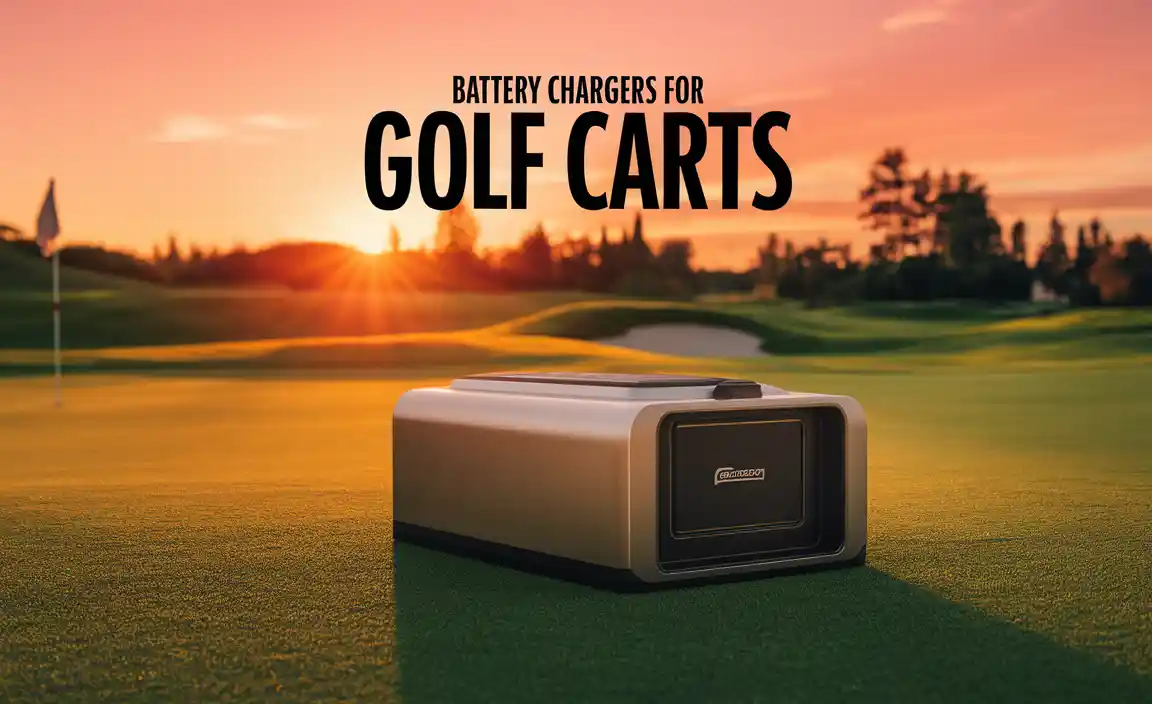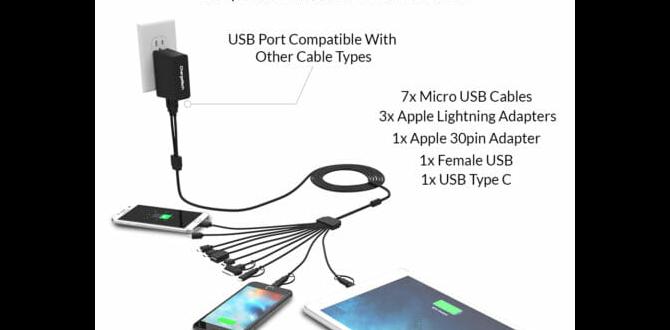Looking for a cheap gel car battery with the longest life? Focus on deep-cycle gel batteries known for durability and reliability. While “cheap” and “longest life” can be a balance, prioritizing quality brands and proper maintenance will ensure you get the best value and power for your vehicle.
Is your car battery acting up? It’s a common problem that can leave you stranded. A dead car battery is frustrating, especially when you rely on your vehicle every day. But don’t worry! Choosing the right battery doesn’t have to be complicated, and finding one that’s both affordable and long-lasting is totally achievable. We’ll walk you through everything you need to know to get essential power back into your ride, keeping things simple and safe every step of the way. Get ready to power up with confidence!
Understanding Gel Car Batteries: The Smart Choice for Longevity
When we talk about car batteries, we usually think of the standard lead-acid type. But there’s another type that’s gaining popularity for its durability and longevity: the gel car battery. What makes it special? Let’s break it down in simple terms.
Unlike traditional flooded lead-acid batteries where the acid is a liquid, a gel car battery uses a special electrolyte that’s mixed with silica fume to form a thick, gel-like substance. This unique design offers several advantages that can lead to a longer lifespan and better performance, especially in certain conditions.
Why Gel Batteries Stand Out
Think of it like this: a gel battery is more robust and less prone to issues that can shorten the life of a regular battery. Here’s why:
- Less Maintenance: Since the electrolyte is a gel, there’s very little chance of leaks. This means you don’t have to worry about checking or topping up fluid levels like you would with a traditional battery.
- Vibration Resistance: The gel electrolyte helps the battery absorb shocks and vibrations better. This is great for vehicles that often drive on rough roads or experience a lot of movement.
- Deep Discharge Capability: Gel batteries are typically designed for deep-cycle applications. This means they can be discharged more deeply and recharged many times without suffering as much damage compared to standard starting batteries. This is key for longevity.
- Temperature Tolerance: They often perform better in a wider range of temperatures, both hot and cold, compared to flooded batteries.
- Lower Self-Discharge: When not in use, gel batteries tend to lose their charge more slowly than other types.
Now, when you’re searching for a “cheap gel car battery with longest life,” it’s important to understand that “cheap” often involves a trade-off. While you can find budget-friendly gel batteries, the absolute longest-lasting ones usually come from reputable brands that invest in better materials and manufacturing. The key is to find that sweet spot where you get great performance and a solid lifespan without overspending.
What to Look for in a “Cheap Gel Car Battery with Longest Life”
Finding that perfect balance between cost and longevity requires a bit of know-how. Here’s what to keep in mind when you’re on the hunt:
Key Features to Prioritize
Don’t just grab the first gel battery you see. Look for these specific characteristics:
- Deep Cycle vs. Starting Battery: For the longest life and best performance when your car is sitting for a while or powering accessories, opt for a deep-cycle gel battery. These are built to handle repeated discharges. Standard starting batteries are made for quick bursts of power and don’t last as long with deep discharges.
- Capacity (Ah Rating): This tells you how much power the battery can store. A higher Amp-hour (Ah) rating generally means more capacity, but make sure it’s suitable for your car’s needs.
- Reserve Capacity (RC): This is the number of minutes a fully charged battery can deliver 25 amps at 80°F (27°C) while maintaining a voltage above 10.5 volts. A higher RC means the battery can power your car’s essentials for longer if the alternator fails.
- Cold Cranking Amps (CCA): If you live in a cold climate, CCA is crucial. It measures the battery’s ability to start an engine in freezing temperatures.
- Brand Reputation: While you’re looking for “cheap,” don’t ignore established brands known for quality. Sometimes paying a little more upfront for a trusted name like Optima, Exide, or ACDelco can save you money in the long run due to their superior lifespan and reliability.
- Warranty: A longer warranty period is a good indicator of the manufacturer’s confidence in their product’s lifespan. Look for warranties of 2 years or more.
- Group Size: Make sure the battery fits your car’s battery tray and has the correct terminal placement. Common sizes include Group 24, 35, 51R, and 65. Check your car’s manual or look up your vehicle on auto parts store websites.
Understanding the “Cheap” Factor
When we say “cheap,” it doesn’t mean the absolute lowest price. It means getting the most value for your money. A battery that costs slightly more but lasts twice as long is a much better “cheap” option in the long run.
Consider these points:
- Initial Cost: The upfront price is what most people see as “cheap.”
- Lifespan: How many years or charge cycles can you expect?
- Performance: Does it reliably start your car and power accessories?
- Maintenance Costs: Gel batteries generally require less maintenance, saving you time and potential costs.
A truly cost-effective gel battery will offer a good balance of these factors. You might find a decent gel battery for under $200, but the longest-lasting ones from top brands could be anywhere from $200 to $400 or more, depending on the specific type and features.
Maintaining Your Gel Car Battery for Maximum Lifespan
Even the best gel car battery needs a little care to reach its full potential lifespan. Good maintenance practices can extend its life significantly, helping you save money and avoid unexpected breakdowns.
Essential Maintenance Tips
Here are some simple things you can do:
- Keep it Clean: Regularly check the battery terminals for corrosion. White or blue powdery buildup is a sign of corrosion. Clean it off with a wire brush and a mixture of baking soda and water. Keep the top of the battery clean from dirt and debris.
- Ensure Secure Connections: Make sure the battery cables are tightly connected. Loose connections can cause starting problems and prevent the battery from charging properly.
Recommended Tool: For cleaning terminals and ensuring a good connection, a battery terminal cleaner brush is a must-have. You can find durable ones online or at your local auto parts store for under $15.
- Check for Damage: Inspect the battery case for any cracks, bulges, or leaks. Physical damage can compromise the battery’s integrity and lead to failure.
- Avoid Over-Discharging: While gel batteries handle deep discharges better than standard ones, repeatedly draining them completely will reduce their lifespan. Try to start your car regularly, especially if it sits unused for long periods.
- Use the Right Charger: If you need to charge your gel battery, use a charger specifically designed for gel-cell batteries. Using the wrong charger can damage the battery. Many modern smart chargers have settings for different battery types.
- Monitor Battery Voltage: A simple multimeter can help you check the battery’s voltage. A fully charged gel battery should read around 12.6-12.8 volts when at rest. If it consistently reads lower, it might indicate a problem with the battery or the charging system. You can learn more about basic battery testing through resources like the U.S. Department of Energy’s Vehicle Battery Testing and Maintenance Guide.
- Protect from Extreme Temperatures: While gel batteries are more tolerant, extreme prolonged heat can still degrade them faster. If possible, try to park in a shaded area during very hot weather. In very cold weather, ensure your battery is well charged, as a weak battery is more susceptible to freezing.
DIY Battery Check-Up Schedule
Setting aside a few minutes every few months can prevent big problems.
- Every 3 Months: Visual inspection of the battery case and terminals for cleanliness and damage. Check cable connections for tightness.
- Every 6 Months: Clean terminals if any corrosion is visible. Test battery voltage with a multimeter if you have one.
- Before Winter/Summer (Seasonal): Ensure terminals are clean and connections are tight. Perform a voltage test. If you plan on using a battery tender or charger, now is a good time to check its settings.
These simple steps ensure your “cheap gel car battery with longest life” actually lives up to its potential.
Gel vs. AGM vs. Flooded Lead-Acid Batteries: A Quick Comparison
To truly appreciate why a gel battery might be the best choice for longevity, let’s quickly compare it to the other common types of car batteries.
You’ll often see three main types when shopping:
- Flooded Lead-Acid
- AGM (Absorbent Glass Mat)
- Gel Cell
Here’s a simple breakdown:
| Feature | Flooded Lead-Acid | AGM (Absorbent Glass Mat) | Gel Cell |
|---|---|---|---|
| Electrolyte | Liquid | Absorbed in fiberglass mats | Suspended in a gel matrix |
| Maintenance | Requires checking fluid levels; potential spills | Sealed, maintenance-free | Sealed, maintenance-free |
| Vibration Resistance | Poor | Good | Excellent |
| Deep Discharge | Poor (damages easily) | Good (more robust than flooded) | Excellent (designed for deep cycling) |
| Charging Speed | Moderate | Fast | Slowest (can be sensitive to overcharging) |
| Cost (Generally) | Lowest | Medium | Medium-High |
| Lifespan (General Avg.) | 3-5 years | 4-7 years | 5-8+ years |
| Best Use Case | Basic starting needs, budget-conscious | Start/stop technology, high electrical demands, general use | Deep cycling, RVs, boats, solar power, vehicles with heavy accessory use, long-life seekers |
As you can see, gel batteries typically offer the longest lifespan and best vibration resistance, making them a strong contender when you’re looking for endurance and reliability, even if the initial “cheap” price point might be a bit higher than a basic flooded battery.
AGM Batteries: A Close Runner-Up
AGM batteries are often mentioned alongside gel. They are also sealed and maintenance-free, and they handle vibrations better than flooded batteries. They generally offer a longer lifespan than flooded types and can be charged faster than gel batteries. For many general automotive applications, an AGM battery is an excellent choice and often presents a good balance of performance and cost.
However, if your priority is maximizing lifespan and you’re looking for the best performance in deep discharge situations (like powering accessories when the engine’s off for extended periods, or in off-grid systems), a gel battery often has the edge. They are also typically more forgiving if accidentally overcharged, though still not ideal.
When considering a “cheap gel car battery with longest life,” remember to compare the prices and warranties of both quality gel and AGM batteries from reputable brands in your vehicle’s required group size.
Choosing the Right Gel Battery for Your Vehicle
So, you’re convinced a gel battery is for you, and you want one that’s “cheap” but lasts a long time. How do you pick the right one for your car?
Step-by-Step Selection Guide
Follow these steps to make an informed decision:
- Identify Your Car’s Battery Group Size: This is the most critical first step. Your car’s manual, the sticker on your old battery, or online auto parts retailers can tell you the correct group size (e.g., Group 24, Group 35, Group 65). Using a battery of the wrong size won’t work.
- Determine Your Needs:
- Daily Driver: You’ll need sufficient CCA for your climate and a decent reserve capacity.
- Car with Lots of Accessories: If you run a powerful stereo, extra lights, or other electronics, a higher Ah rating and R/C will be beneficial.
- Infrequent Use/Storage: A low self-discharge rate is key here.
- Research Reputable Brands Known for Longevity: Look for brands that consistently receive good reviews for battery life. Some brands to consider include:
- Optima Batteries (often considered top-tier for performance and longevity, though usually not the “cheapest” upfront)
- Exide Technologies
- ACDelco
- Yuasa
- Deka (East Penn Manufacturing)
- Compare Specifications (Ah, RC, CCA): Once you’ve narrowed down brands and found batteries in your correct group size, compare their capacity (Ah), reserve capacity (RC), and cold-cranking amps (CCA) if applicable to your region. Ensure they meet or exceed your vehicle’s requirements.
- Check Warranties: A longer warranty (e.g., 3-5 years) is a strong indicator of expected lifespan. Factor this into your “cheap” calculation – a higher initial price with a longer warranty often means lower cost per year.
- Read Reviews (with a Grain of Salt): Look for long-term reviews from users who have had the battery for a year or more. Be wary of extremely short or overly negative reviews that might be isolated incidents.
- Consider the Price vs. Value: Look at the total cost of ownership. The cheapest battery upfront might fail sooner. Calculate cost per year of expected life. For example, a $300 battery that lasts 5 years is cheaper per year than a $150 battery that lasts only 2 years.
- Purchase from a Reputable Retailer: Buy from established auto parts stores, battery specialists, or trusted online retailers. This ensures you get a fresh battery and have a place to go if there’s an issue.
Where to Find Deals
Finding a “cheap” option often comes down to smart shopping:
- Sales and Promotions: Keep an eye out during holidays or seasonal sales events at major auto parts chains (AutoZone, Advance Auto Parts, O’Reilly Auto Parts, NAPA).
- Online Retailers: Amazon, Batteries Plus Bulbs, and direct manufacturer websites can sometimes offer competitive pricing.
- Local Battery Specialists: Independent shops sometimes have good deals and knowledgeable staff.
- Compare Prices: Don’t buy the first battery you see. Use online tools or visit a few stores to compare prices for the exact same or comparable models.
Remember, the goal is the “longest life” for the “cheapest” overall cost, not just the lowest sticker price today.
Is a Gel Battery Right for Your Car?
While gel batteries are fantastic for longevity and specific applications, they might not be the perfect fit for every single car or every driver. Let’s figure out if this is your best power solution.
Who Benefits Most from Gel Batteries?
You’ll likely get the most bang for your buck with a gel battery if:
- You want maximum lifespan: You’re willing to invest a bit more upfront for a battery that could last significantly longer than a standard one.
- Your vehicle experiences rough terrain or heavy vibration: The robust construction of gel batteries makes them ideal for off-road vehicles, trucks, or cars driven on bumpy roads.
- You use a lot of accessories with the engine off: Whether it’s a car stereo, camping equipment, or other electronics, the deep-cycle capability of gel batteries allows them to be discharged more deeply without damage.
- You have a vehicle with start/stop technology: While AGM is often recommended, some high-performance gel batteries can also handle the frequent.



